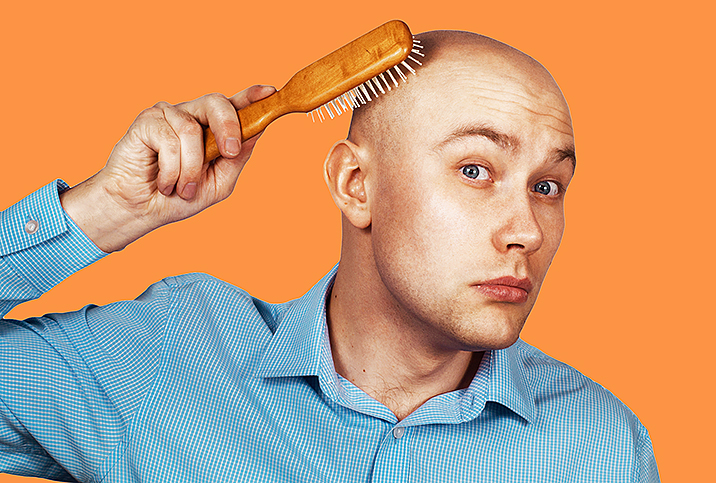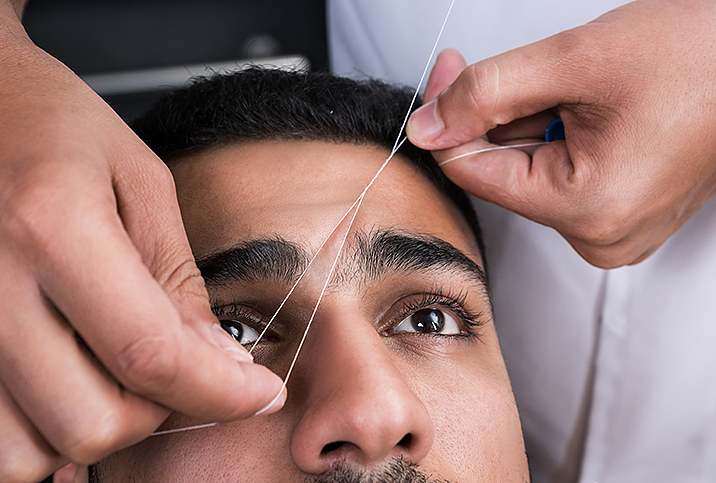The Bald Facts About Hair Restoration

If the bald spot you see has you down, or the hairline that is in full retreat has you avoiding mirrors and social interaction, you're not alone. Baldness, in one of many forms, comes for most men. Up to half of men experience male pattern baldness, also known as male androgenetic alopecia (MAA), by the age of 50, and while medically there's usually no danger, self-image and confidence can take a hit.
Noninvasive treatment for hair loss ranges from pills to creams to hats equipped with special lights, but if all of those fail, you don't have to give up. Hair-restoration procedures that require transplants and surgery are common. We break down a few of the more popular options here.
Follicular transplant techniques
There are two main types of hair transplants: follicular unit transplant and follicular unit extraction.
Follicular unit transplants have been around for about 20 years and are tedious procedures that require several hours to complete. During the procedure, the surgeon removes a strip of hair-containing skin from the back of a patient's head and then creates small holes in the balding area where individual grafts are placed, typically in units from one to four hairs. After surgery, patients need to care for both the back of their head and the donor site. Permanent scarring on the back of the head is difficult to avoid, but most people are happy with the changes, overall.
Similar to a transplant, during a follicular unit extraction, the surgeon moves hair follicles from the back of the head to balding areas. To avoid scarring, follicles are removed individually rather than as a strip of tissue.
The follicular unit extraction technique adds more time to an already lengthy procedure, but it offers several benefits. Recovery is faster and less painful. Patients don't need to worry about an extended downtime for wounds to heal, and they won't have a visible scar.
Tissue expansion procedure
Another option to minimize balding is a procedure called tissue expansion. A plastic surgeon inserts a balloon-like device, referred to as a tissue expander, underneath the skin. The tissue expander is placed in an area with hair that's adjacent to the balding area. Over several weeks, saline injected into the device produces a bulge and stretches the skin, leading to growth.
After about two months, there's usually enough new tissue to help cover the balding area, at which point the surgeon will remove the tissue expander and pull the extra skin forward to create a fuller hairline.
Scalp reduction & flap surgery
To treat a bald spot on the top or back of the head, your surgeon may suggest scalp reduction, or alopecia reduction, surgery (though it has fallen out of favor recently). Bald areas of your scalp are excised and scalp skin with hair is stretched to cover those areas. Depending on the shape and size of the bald area, incision size and shape are customized to create natural coverage. Flap surgery is a similar procedure—a bald section of scalp is removed and a similarly shaped section of scalp with hair, which is still attached to its blood supply, is put in its place—that's often combined with other techniques (like tissue expansion) for optimal results.
Making your hair-restoration decision
Meet with a board-certified plastic surgeon with experience in hair restoration to help you decide which treatment option is best for you. Hairlines vary significantly from person to person, so your surgeon should tailor the chosen technique or techniques for a natural look that suits you best. The ideal candidate for any of the above procedures has sections of hair available for a donor site. Other options, such as medications that cause hair growth, are often a better option to try first.
Hair transplants are effective but not necessarily a quick fix. Many patients require multiple treatments when using grafts, and the new hair can take a few months to grow in. If you decide to get a hair transplant, be aware that touch-up sessions may be required to achieve your desired result. And genetics don't change; you may face further hair loss down the road.
With patience and a willingness to invest in a qualified surgeon, it's possible to reverse the clock on your hairline through surgery.


















